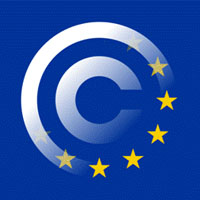Commission attempts to unblock patent dossier
The future of the patent system in Europe is back on the political agenda again with the publication by European Commission of a communication, outlining ways to make the Community patent a reality while at the same time improving the current patent litigation system. The Community patent, discussions on which have been underway since 1975, would allow individuals and companies to obtain a unitary patent throughout the EU. The Community patent should not be confused with European patents which, once granted, become a bundle of nationally enforceable patents in designated Member States. European patents can be expensive for the applicant in that enforcement must be carried out through national courts in individual countries. They are also expensive for third parties as revocation cannot be accomplished centrally after a certain period. It is estimated that a European patent valid for 13 countries is about 11 times more expensive than a US patent, and 13 times more expensive than a Japanese patent. A stakeholders' consultation in 2006 made it clear that the current EU patent system is no longer sustainable. Stakeholders fully backed the idea of the Community patent, which is intended to solve both problems of cost and litigation, and also to provide a patent right that is consistent across Europe, thus fulfilling one of the key principles of the single market. However, there are some major sticking points with the Community patent. Notable among them are the high costs for translations. While patent applications can be submitted in any of the three official languages (German, English and French), successful claims must be filed in all official Community languages at the applicant's cost. Some stakeholders have also objected to the excessive centralisation of the proposed jurisdiction system. Focusing on the issue of jurisdiction, the Commission puts forward suggestions on first improving the current litigation system, which would in turn pave the way for the Community patent. 'The Community patent and improvements to the current litigation system for European patents should not be mutually exclusive. Indeed our aim should be to ensure that they converge. If we can find a solution to the litigation issue, it should also be possible to resolve the Community patent issue by finding a consensus on translation arrangements,' noted the European Commission's Internal Market Commissioner, Charlie McCreevy. Here again though, there have been two schools of thought as how the litigation system could be improved. One suggestion is the draft European Patent Litigation Agreement (EPLA), which proposes the creation of the European Patent Judiciary, a unified litigation system on European patents. Other Member States suggest that, rather than establishing an EPLA court for European patents only, it would be preferable to set up a Community structure that could deal with both European patents and future Community patents. As a compromise, the Commission suggests a combined approach. This would take the form of a unified and specialised patent judiciary with competence for litigation on European patents and future Community patents. Such a judicial system could be strongly based on the EPLA model, in particular as regards the specificities of patent litigation, but could allow for harmonious integration into Community jurisdiction. The Commission argues that this would avoid jeopardising the Community patent and having two jurisdictions competing on patent litigation in Europe. Beyond the Community patent project and jurisdictional arrangements, the Commission also proposes a number of supporting measures for improving the patent system. These include specific measures on patent quality, knowledge transfer and enforcement, as well as measures aimed at making the system more accessible to small and medium sized enterprises - a section of the business community which has been unable to fully exploit its inventions and protect its patent rights due to a lack of awareness and high costs. With the publication of the Communication, Mr McCreevy hopes to create some 'fertile ground' for a debate in the Council and European Parliament. 'I have made no secret of the fact that I think that the patent dossier is a very tough nut to crack,' he said. 'If short-sightedness and selfish vested interests continue to prevail, the European reform agenda will fail and the European economy will suffer. I therefore call upon all concerned to assume their responsibilities, rise to the challenge and strive to find pragmatic and workable compromises,' said the Commissioner. He said he looked forward to the German Presidency taking up the challenge and moving the dossier forward. 'The Commission stands ready to assist the Presidency,' he concluded.



